I have the dataframe
test <- structure(list(
y2002 = c("freshman","freshman","freshman","sophomore","sophomore","senior"),
y2003 = c("freshman","junior","junior","sophomore","sophomore","senior"),
y2004 = c("junior","sophomore","sophomore","senior","senior",NA),
y2005 = c("senior","senior","senior",NA, NA, NA)),
.Names = c("2002","2003","2004","2005"),
row.names = c(c(1:6)),
class = "data.frame")
> test
2002 2003 2004 2005
1 freshman freshman junior senior
2 freshman junior sophomore senior
3 freshman junior sophomore senior
4 sophomore sophomore senior <NA>
5 sophomore sophomore senior <NA>
6 senior senior <NA> <NA>
and I want to create a graph that should resemble the ugly text art below:
freshman ---- junior ----------------------\
freshman ---- junior --- sophomore -------- senior
sophomore ================================/
senior ---------------------------------/
In other words, I need to show in a graph the possible paths to "senior", giving weights to edges according to the number of cases using that path.
First attempt This code generates a graph, but not one similar to the text art above.
library(igraph)
elist <- lapply(seq_len(nrow(test)), function(i) {
x <- as.character(test[i,])
x <- unique(na.omit(x))
x <- rep(x, each=2)
x <- x[-1]
x <- x[-length(x)]
r <- matrix(x, ncol=2, byrow=TRUE)
if (nrow(r) > 0) { r <- cbind(r, i) } else { r <- cbind(r, numeric()) }
r
})
result <- as.data.frame(do.call(rbind, elist))
names(result) <- c("vertex","edge", "id")
categories <- data.frame(name=c("freshman","junior","sophomore","senior"))
g <- graph.data.frame(result,directed=T,vertices=categories)
g <- set.edge.attribute(g, "weight", value=runif(ecount(g))*10)
igraph.par("plot.layout", layout.reingold.tilford)
plot(g, vertex.label=categories$name, vertex.label.dist=7,
edge.width=get.edge.attribute(g,"weight"), edge.arrow.size=1.5)
Result (not what I wanted)

**This question is related to this post*
**And this post is a necessary step for solving this question*

